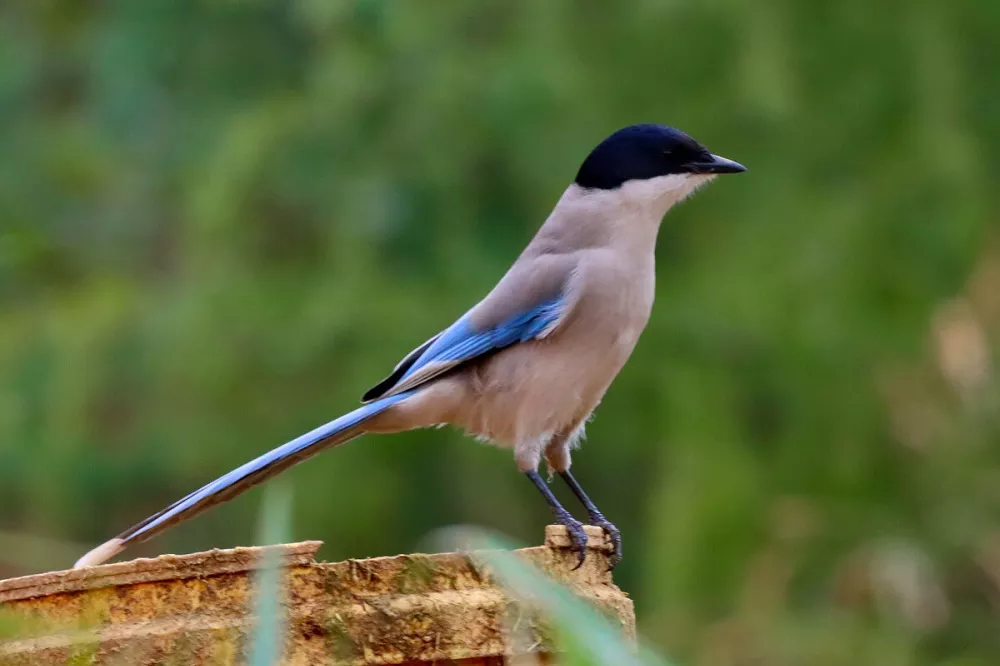Azure-winged magpies (Cyanopica cyanus) are captivating avian species renowned for their striking appearance and sociable behavior. Native to eastern Asia, these birds have a specific range where they thrive. In this article, we delve into the natural habitat and geographic distribution of azure-winged magpies, shedding light on the regions they inhabit and the factors that influence their presence.
Geographic Distribution:
Azure-winged magpies are primarily found in eastern Asia, with their distribution spanning across several countries. They are commonly observed in China, particularly in the eastern and central regions, including areas such as Hebei, Shandong, Jiangsu, and Zhejiang provinces. These birds also inhabit parts of Korea, where they are known as the Korean magpie, and are occasionally spotted in Japan, mainly in the western regions of Honshu and Kyushu islands.
Habitat Preferences:
Azure-winged magpies exhibit habitat preferences that are characteristic of their geographic distribution. They primarily inhabit deciduous and mixed forests, taking advantage of the resources and shelter provided by these environments. Within these forests, they often favor areas with a diverse tree canopy, providing ample foraging opportunities and nesting sites. While forests are their primary habitat, they can also be found in other wooded areas, including parks, gardens, and farmlands, particularly if suitable trees are present.
Forest Types:
Within their range, azure-winged magpies are adaptable and can occupy various forest types. They are commonly associated with broadleaf forests, which are characterized by a mix of deciduous trees such as oaks, maples, and elms. These forests offer a rich supply of insects, fruits, and seeds, which form a significant part of the magpies’ diet. However, they can also inhabit coniferous forests, particularly those that have a mixture of conifers and deciduous trees, providing a diverse range of food sources and nesting opportunities.
Altitudinal Range:
Azure-winged magpies display a remarkable ability to adapt to different elevations within their habitat range. While they are primarily found in lowland areas, they can also inhabit higher elevations, ascending up to approximately 2,500 meters (8,200 feet) above sea level. This adaptability allows them to take advantage of a wider range of forested habitats, expanding their distribution across varying altitudinal zones.
Behavior:
Azure-winged magpies are active and intelligent birds that are known for their elaborate vocalizations. They have a range of calls and songs, which they use to communicate with each other. They are also known for their playful behavior, often engaging in acrobatics and chasing each other around.
These birds are opportunistic feeders, meaning they will eat whatever food is available. Their diet consists mainly of insects, nuts, and seeds, but they will also eat small vertebrates, such as lizards and frogs. In urban areas, they have been known to scavenge for food scraps left by humans.
Impact of Habitat Loss:
Like many other bird species, azure-winged magpies face challenges due to habitat loss and degradation. The expansion of human settlements, agriculture, and infrastructure development can result in the destruction and fragmentation of their preferred forest habitats. Such disturbances can disrupt their nesting sites, food availability, and overall ecological balance. Conserving and protecting their habitats, particularly forests, is crucial for the long-term survival of azure-winged magpies and the preservation of their populations.
Conclusion:
Azure-winged magpies have a specific geographic distribution, primarily occupying eastern Asia. Their habitat preferences revolve around deciduous and mixed forests, where they find ample resources and suitable nesting sites. These adaptable birds can inhabit a range of forest types and demonstrate the ability to thrive in different elevations. However, the encroachment of human activities poses a threat to their habitats and populations. By recognizing the importance of their natural habitat and implementing conservation measures, we can contribute to the protection of azure-winged magpies and ensure their presence for future generations to appreciate and admire.


 Facebook
Facebook  Instagram
Instagram  Youtube
Youtube 